The David Poile Draft feature began with Kyle Gipe and his coverage of the 1998-2009 drafts. I’m taking over the 2010s decade of Nashville Predators’ drafting, which again only saw one man — David Poile — at the helm. For those that missed it, here are the links to the previous draft recaps:
- 1998: Franchise’s Inaugural Draft
- 1999: Erat Leads to Forsberg
- 2000: Scott Hartnell and Nothing Else
- 2001: Hamhuis and Tootoo
- 2002: What was Poile Thinking?
- 2003: The Suter and Weber Draft
- 2004: Predators Get Franchise Goaltender
- 2005: Drafting Hornqvist Last Overall
- 2006: Worst Draft in Franchise History?
- 2007: Nick Spaling Leads to James Neal…Eventually
- 2008: Predators Land Future Captain in Josi
- 2009: Success Everywhere but Round Two
- 2010: Austin Watson and Then a Face-Plant
- 2011: Salomaki and the Wrong Karlsson
- 2012: Sissons and Minimal Depth
With the highest pick (fourth overall) since their inaugural draft in hand, and eleven picks total (though they traded one away during the draft), things were looking up after a dismal finish in the standings. In the lockout-shortened 2012-13 season, the Predators stumbled to a 16-23-9 record, only two points ahead of the Colorado Avalanche for last in the Western Conference. The team’s leading scorer was Shea Weber, and he was the only player on the team to top 25 points in the 48 game slate. Bottoming out did lead to the team trading long-serving member Martin Erat in exchange for Filip Forsberg, so in hindsight, the year wasn’t a total loss.
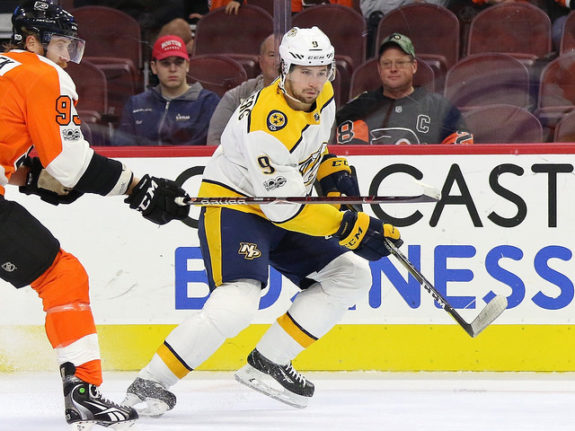
The draft itself featured a top-four group, so sitting with the fourth overall pick, David Poile just had to wait and see which player would fall into their lap. Unfortunately for the Predators, it wasn’t the center they were hoping for, and they ended up dealing this player straight up for Ryan Johansen just a few short years later, in a deal that has had its highs and lows but generally has worked out well for both sides.
Early Rounds (1st and 2nd)
Round 1, 4th Overall – Seth Jones, D (Portland Winterhawks, WHL)
At the end of the 2013 CHL season, Seth Jones was named the top prospect of the year after posting 56 points for the Portland Winterhawks. His team lost in the finals of the Memorial Cup tournament, and Jones was a big reason why. Portland lost in the finals to the Halifax Mooseheads, who were sending out two of the players picked ahead of Jones in the draft, Nathan MacKinnon and Jonathan Drouin. Jones was viewed as a player who could use his size, intelligence, and puck skills to dominate at both ends of the ice. He has since become exactly that player.
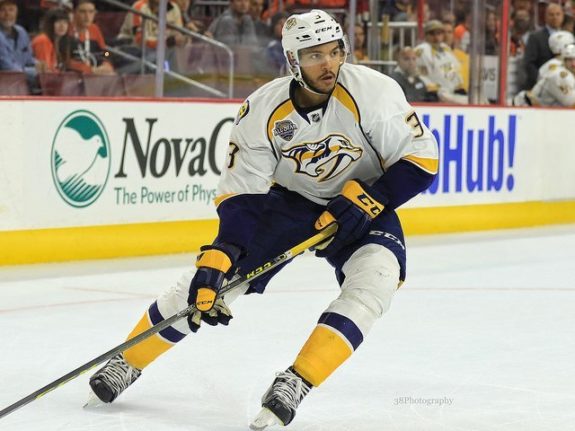
The Predators had Jones fall into their lap at fourth overall, and David Poile had this to say at the time:
“I wish I wouldn’t have to say, ‘I can’t believe the player was there,’ but we had Seth Jones rated No. 1. We think he is just a terrific player,” Poile said. “This is a franchise-type player. … Seth Jones to us has been the best player, but we’ll see. We all know how it goes with the draft and we won’t know for several years, but this feels real good.”
David Poile at the 2013 Draft.
Though they weren’t expecting to select a defenseman, the Predators drafted the best player available. From there, sometimes things sort themselves out, and after two-and-a-half seasons of bringing Jones along behind a glut of other star defensemen, he was moved for the center that the team desperately needed. In January of 2016, Jones was traded to the Columbus Blue Jackets for a then-disgruntled Johansen. The young center became a focal point of the Predators’ offense and was a catalyst in their run to the 2017 Stanley Cup Final. Had he not been injured, perhaps the result of that series would have been different.
Unfortunately, on the Columbus end, Seth Jones has recently stated that he does not want to re-sign with the team when his current contract expires in the summer of 2022. Jones may look to hit free agency at that point and could find his worth be worth upwards of $10 million per season on the open market; not bad for a former fourth overall pick.
Middle Rounds (3rd-5th)
Round 3, 64th Overall – Jonathan-Ismael Diaby, D (Victoriaville Tigres, QMJHL)
With their second selection of the draft, the Predators again tabbed a young and sizeable defenseman in Diaby. He was viewed as a bit more of a long-term project and a player that would be tough to play against in a shutdown role. As is the case with many players drafted based on size, there isn’t the upside for these players to end up making the NHL, and Diaby was not the exception. He graduated to the AHL in 2014 and played 52 games that year for the Milwaukee Admirals, notching two points and 94 PIMs. After that, he bounced between the AHL and ECHL for a few years and played his last pro hockey in 2017.
Round 4, 95th Overall – Felix Girard, C (Baie-Comeau Drakkar, QMJHL)
Girard was a lower upside player that worked hard and was drafted due to a point-per-game season his third year in the QMJHL. Unfortunately, that was his peak, and the energy forward saw a drop in his point totals the next year (though he did double his PIMs). From there, he stepped into the AHL and played a middle role for the Admirals before bouncing around to a few other AHL teams and even landing in the ECHL for a few games before leaving overseas.
Round 4, 99th Overall – Juuse Saros, G (HPK Jrs, Finland)
Saros may have been the top-rated European goaltender heading into the 2013 draft. Still, any goalie taken after round two is a bit of a dart throw, and that is especially the case when the goalie in question is five-foot-eleven. Saros has succeeded at every level despite being questioned about his size at every turn. He makes up for it by being extremely athletic, hard-working, and positionally sound.
He made his NHL debut in the 2015-16 season, playing one game for the Predators and allowing three goals. He went down to Milwaukee, thrived in the system there, starting 38 games. The next season he was up in the NHL as an injury fill-in, playing regularly. From 2016-2021, Saros bided his time behind incumbent Pekka Rinne, providing solid play and notching a save percentage above .914% every year.
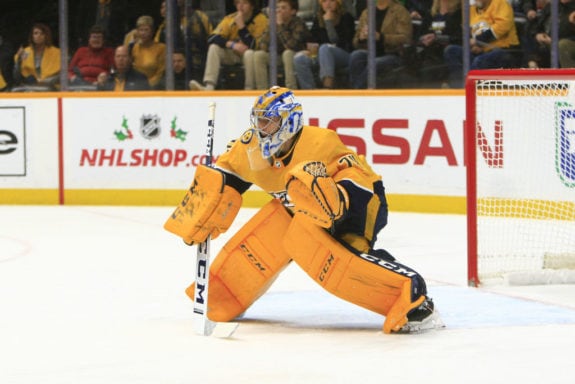
Saros took eight years to finally take hold of the starter’s reins, but with Rinne moving aside, the torch is now Saros’ to hold. He was one of the best goalies in the NHL in 2020-21, though he was snubbed from a Vezina nomination. With his bridge deal expiring for the 2021 free agency period, Saros will command a large raise, fitting of a team’s top-tier starter for years to come.
Round 5, 125th Overall – Saku Maenalanen, RW (Karpat Jrs, Finland)
With their first pick in the fifth round, the Predators went back to the Finland Jrs and selected forward Menalainen. The lanky winger was an excellent passer, and in his draft year, led the junior league in assists.
Latest Predators Content:
- Looking Back on Tom Fitzgerald’s Nashville Predators Tenure
- 9 NHL Teams That Missed in Free Agency
- Get to Know New Nashville Predator Jonathan Marchessault
- Peter “Foppa” Forsberg: A Biography
- Get to Know New Nashville Predator Steven Stamkos
He was the 130th ranked European skater in the draft, so grabbing him at 125th overall may have been a bit of a reach at the time. Hindsight confirms that Maenalanen only played 34 NHL games in 2018-19, scoring eight points. He also played 31 AHL games that year with Milwaukee, which ended up being his only year in North America. As of 2021, he is still playing professionally for Jokerit in the KHL.
Round 5, 140th Overall – Teemu Kivihalme, D (Burnsville, Minn. H.S.)
As has become a staple of the Predators, they spent a middle-round pick on a small, offensive defenseman. Kivihalme fell in the draft, likely due to his size (5-foot-10, 150 pounds), but with their second pick of the round, the Predators were at the point that they could take a gamble on the Minnesota native. He stagnated in the NCAA, though, and the Predators never offered him a contract. He then went back to Karpat in Finland, where his development picked back up, and he was signed to his entry-level deal by the Toronto Maple Leafs. He has played for the Toronto Marlies in the AHL from 2019 to 2021.
Missed Opportunity: Pittsburgh Penguins Select Jake Guentzel, C (Sioux City Musketeers, USHL) – 77th Overall
Had the Predators decided they wanted a forward instead of a low-upside defenseman with their 64th overall pick, there was one particular forward still on the board that had been lighting things up in the USHL. Guentzel dropped in the draft due to a small frame, but the USHL rookie of the year just put up points at every level. After he was drafted to the Penguins, he moved on to the NCAA, where his offense really took off.
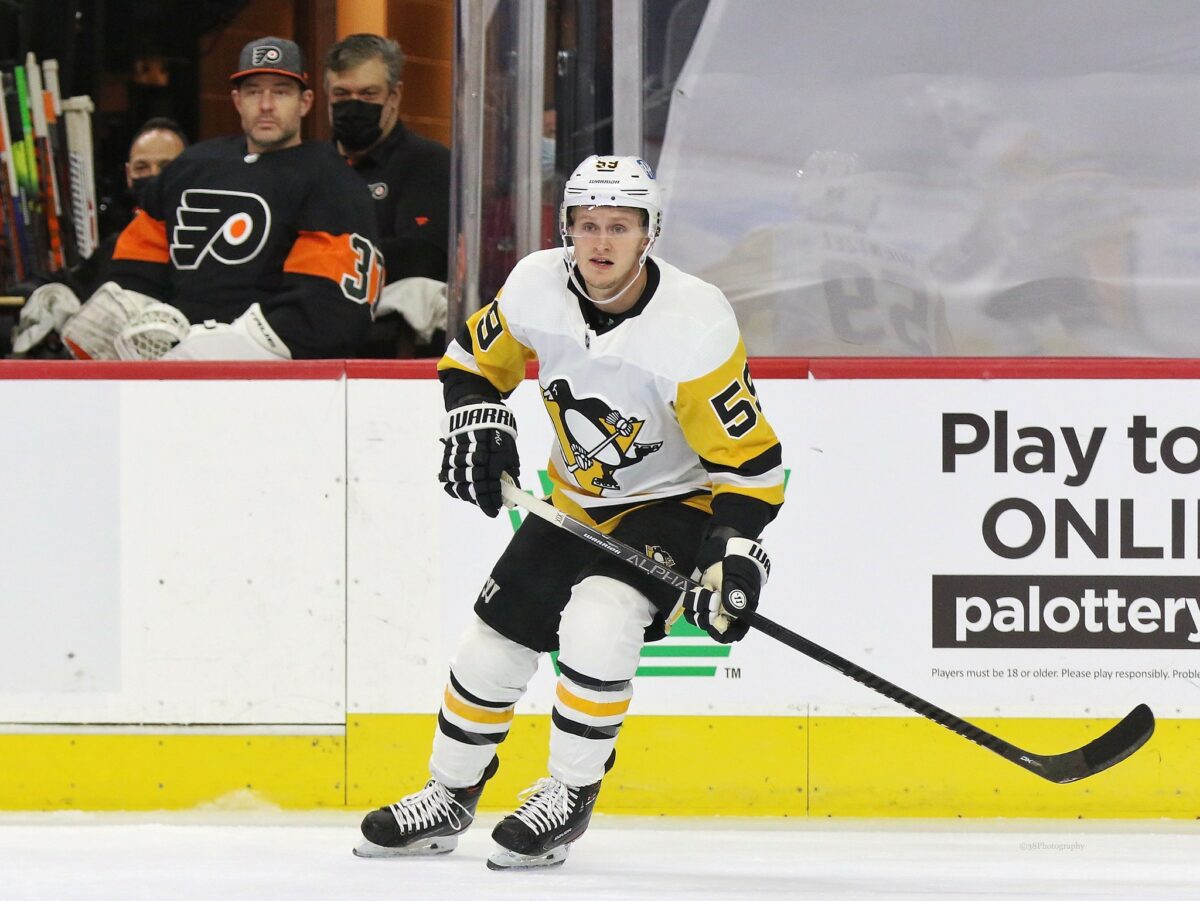
In 2016-17, he made his NHL debut, playing 40 games and notching 33 points. He won a Stanley Cup with Pittsburgh in that rookie year, coincidentally defeating the Predators. He hasn’t looked back since, peaking with a 40 goal season in 2018-19 and playing at over a point-per-game pace in 2020-21.
Late Rounds (6th and 7th)
Round 6, 155th Overall – Emil Pettersson, C (Timra Jrs, Sweden)
Coming into the draft, Pettersson was viewed as a very high-risk/high-reward player, and that is exactly the kind of gamble you want to make with a later-round pick. Pettersson had played in both offensive and defensive roles throughout his development, and as a pass-first center could have carved out an excellent niche in the NHL with those kinds of skills had he made the jump. He showed well in two seasons at the AHL level but never made it to the NHL. He returned to Sweden for the 2019 season and has played there since.
Round 6, 171st Overall – Tommy Veilleux, LW (Victoriaville Tigres, QMJHL)
The Predators went back to the QMJHL for the third time in the draft and the second time selecting from Victoriaville, nabbing forward Tommy Veilleux. The six-foot winger plays a heavy game, and despite showing some flashes of offense, was viewed as someone who would likely top out as a bottom-six grinder. After five seasons in the QMJHL, though, Veilleux hadn’t developed enough and transitioned sideways into other Quebec leagues, never turning pro.
Round 7, 185th Overall – Wade Murphy, C (Penticton Vees, BCHL)
Murphy was a bit of an off-the-board pick, not listed on the NHL Central Scouting list. He was a standout player in the BCHL, though and was drafted after putting up 70 points in 50 games. The small forward then moved to the NCAA, where his offensive game struggled to keep up. After college, he graduated to the ECHL and played there for three seasons before moving overseas to play in Norway.
Round 7, 203rd Overall – Janne Juvonen, G (Pelicans Jrs, Finland)
Juvonen was drafted out of Finland, where he put up some excellent numbers over the years. He was regarded as a calm and athletic goalie but never crossed over to North America or signed with the Predators. He has signed with Jokerit for the 2021-22 season, which would be his KHL debut.
Missed Opportunity: Florida Panthers Select MacKenzie Weegar, D (Halifax Mooseheads, QMJHL) – 206th Overall
The Panthers found a gem late in the draft in MacKenzie Weegar. He showed well with a cerebral game as a rookie in the QMJHL. In his draft year, he put up 44 points in 62 games and then followed that up with a near-point-per-game season. After that, he turned pro, splitting time between the ECHL and the AHL, before making his NHL debut with three games in the 2016-17 season. He has been a full-time player since, with 77 points in 226 games by the conclusion of the 2020-21 season.
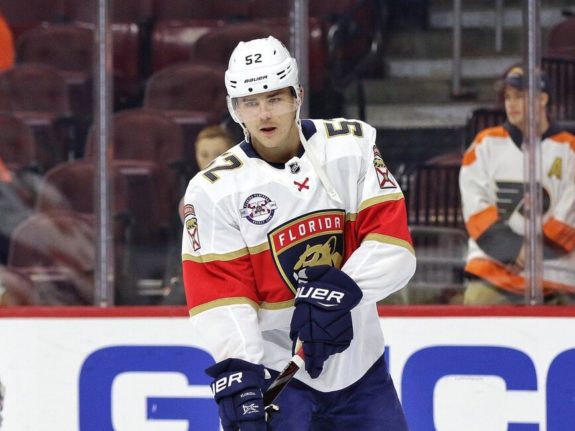
It wasn’t up until this past season that he finally broke out, though. When teammate Aaron Ekblad went down for the season with a leg fracture, Weegar picked up all of the slack. He played over 22 minutes per game, and his scoring rate jumped to a 55-point full-season pace. Not that the Predators were in need of another defenseman at the time, but there are 31 other teams right now that would love to have Weegar playing for them next season.
Overall Grade: B
Anytime a team can pick up a franchise goalie and a franchise defenseman in the same draft, it must be considered a win. Holding the ranking down is the fact that the team basically had Jones fall into their lap and then whiffed on eight other selections. The Saros pick is the main reason this draft can be looked back upon fondly, and having it line up with bringing Forsberg into the fold helped usher in some new hope for the franchise.